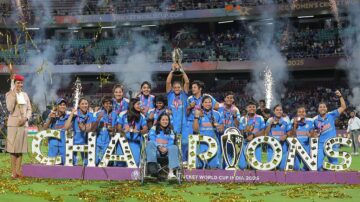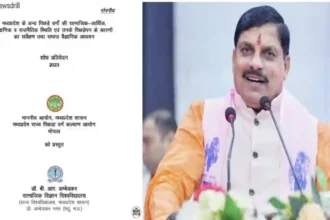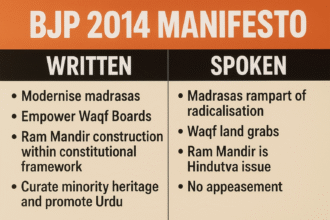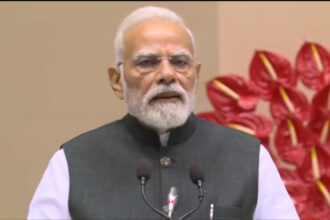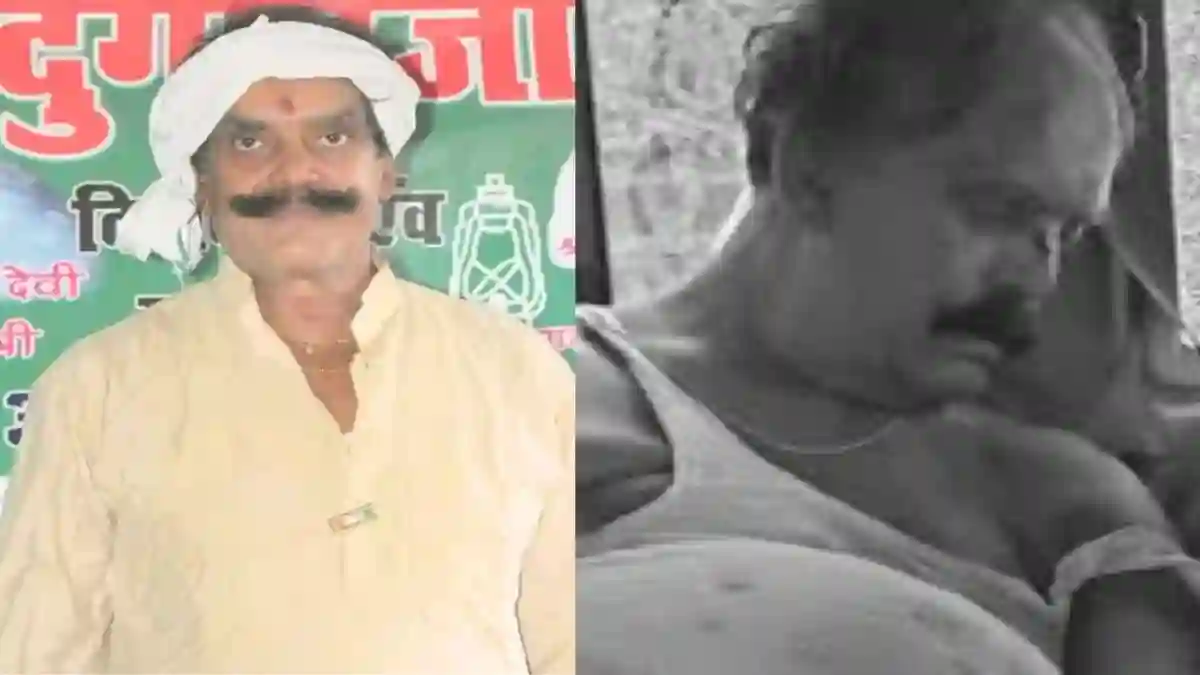
Patna: The murder of veteran leader Dularchand Yadav in Mokama, Patna district, has sent shockwaves through Bihar’s political landscape ahead of the upcoming assembly elections. Emerging postmortem findings and political developments suggest that the incident could alter the delicate caste equations in Mokama and several adjoining constituencies.
According to a report by Dainik Bhaskar, the postmortem of 74 year old Dularchand Yadav revealed gruesome injuries indicating extreme brutality. Meanwhile, political observers believe his death may realign key voter groups particularly among the Extremely Backward Classes (EBCs) and Yadavs which could influence results in Mokama, Lakhisarai, Barh, and Warisaliganj.
Postmortem Revelations Raise Questions
Postmortem staff member Mahipal told Dainik Bhaskar that the injuries sustained by Dularchand were far beyond those mentioned in the official report. He stated that a car was driven over Dularchand Yadav’s body three times, shattering his ribs and puncturing both lungs. The heart’s valves had burst, the shoulder bone was uprooted, and the legs and hips were crushed. Even more disturbingly, a bullet was fired through his heel after his death.
The official postmortem report confirmed that several bones in Dularchand’s chest were broken and that death occurred due to respiratory obstruction caused by ruptured lungs. These details suggest a violent assault, raising serious concerns about the circumstances and the possibility of a cover up in documentation.
The revelations have reignited calls for an independent investigation, as the brutality described does not align with the initial police account.
Sequence of Events: A Political Clash Turns Deadly
The fatal incident occurred on October 30, when convoys of Jan Suraaj Party (JSP) candidate Piyush Priyadarshi and Janata Dal (United) [JD(U)] candidate Anant Singh crossed paths in Mokama’s Ghoswari area. An exchange of words between supporters escalated into violence involving stone pelting and gunfire.
During the clash, a bullet reportedly hit Dularchand Yadav in the heel, and moments later, he was found dead.
Dularchand’s grandson, Niraj Kumar, alleged that Anant Singh personally shot his grandfather before his associates attacked him. “He was then attacked with an iron rod by Karmveer and Rajveer, nephews of Anant Singh. After that, they ran a car over his body,” Niraj told reporters.
The family has filed an FIR accusing Anant Singh and his aides of murder and criminal conspiracy, demanding immediate arrests and police protection.
Multiple FIRs and Conflicting Claims
Three separate FIRs have been lodged in connection with the incident:
1. One by Dularchand’s family, naming Anant Singh and his relatives as the main accused.
2. Another by Anant Singh, who claims his convoy was attacked by rival supporters.
3. A third filed suo motu by the police for investigation of the violence.
Anant Singh, who has been a controversial political figure in Mokama for decades, denied the allegations, telling reporters, “I was canvassing for votes when a crowd attacked the last few vehicles of our convoy. This is a conspiracy by Suraj Bhan Singh.”
Following public outrage, Anant Singh was arrested on Saturday night, though his supporters maintain his innocence.
Political Reactions and Demands for Inquiry
The incident drew sharp reactions across Bihar’s political spectrum.
Former MP Suraj Bhan Singh, whose wife Veena Devi is the RJD candidate from Mokama, demanded an impartial probe. “This incident has brought disrepute to Bihar. The Election Commission should conduct a fair inquiry under the supervision of a retired judge,” he said.
The Rashtriya Janata Dal (RJD) and Jan Suraaj Party leaders have also sought central intervention, alleging political bias in the local police’s handling of the case.
Meanwhile, Nitish Kumar’s JD(U) has distanced itself from Anant’s actions, though opposition leaders claim the ruling alliance is attempting to suppress evidence.
Who Was Dularchand Yadav?
Born in Tartar village under the Diara region of Mokama block, Dularchand Yadav was a veteran political worker with a complex and influential history.
According to a report from The Wire, In his youth, Dularchand was drawn to the Communist Party of India (CPI), becoming active during the “Bhumi Hadpo Andolan” (Land Seizure Movement) in the 1970s. He played a key role in redistributing thousands of bighas of land from zamindars to poor peasants.
However, internal conflicts within the CPI over land division led to violence and killings, resulting in his expulsion from the party. Afterward, Dularchand shifted allegiance to the Janata Dal, building ties with leaders Lalu Prasad Yadav and Nitish Kumar.
He later contested elections independently and briefly joined the Rashtriya Janata Dal (RJD), maintaining a loyal support base in the Yadav and EBC communities across Mokama, Barh, and Lakhisarai.
Over the years, Dularchand’s name became associated with the “bahubali” (strongman) politics of central Bihar a legacy both feared and respected. Despite past controversies, he remained a grassroots mobilizer, particularly among Yadavs and agricultural laborers.
At the time of his death, Dularchand was campaigning for the Jan Suraaj Party’s candidate Piyush Priyadarshi, a move seen as a direct challenge to Anant Singh’s hold over Mokama.
Caste Equations and Electoral Impact
Observers believe Dularchand’s killing could have significant electoral repercussions. His death is not merely a case of violence but one that may reshape caste alliances in the region.In recent years, Nitish Kumar’s policies especially 50% reservation for EBCs in panchayat elections consolidated the support of Dhanuks, an EBC group. Anant Singh, a Bhumihar, had been trying to cultivate support among both Bhumihars and Dhanuks, relying on their combined 65,000 votes in the constituency.
However, the murder has created resentment among Dhanuk voters, as Dularchand was supporting Piyush Priyadarshi, a Dhanuk leader contesting on a Jan Suraaj Party ticket. Locals now speculate that Dhanuks might drift away from the NDA, viewing Anant’s faction with suspicion.
Meanwhile, the RJD’s Veena Devi, wife of Suraj Bhan Singh, is likely to gain from Muslim, Yadav, and Mallah voters estimated at around 45,000 and may also attract urban Bhumihar votes due to her caste background.
Political analysts note that this realignment of caste loyalties could extend beyond Mokama to neighboring constituencies like Lakhisarai, Barh, and Warisaliganj, where Dhanuks constitute a decisive voter bloc.
Broader Implications for Bihar Politics
The incident underscores the enduring nexus between crime and politics in Bihar’s heartland. Even as the state projects an image of stability under Nitish Kumar’s leadership, events like this reveal the fragility of law and order during elections.
The killing also reflects the personal rivalries that often define Bihar’s local politics, where decades old enmities and caste loyalties intersect with electoral strategies.
Political observers suggest that the Election Commission may intervene to ensure fair polling in Mokama and nearby constituencies. Civil rights groups have urged the formation of a judicial inquiry commission to examine the discrepancies between the official postmortem report and eyewitness accounts.
Call for Justice and Protection
Dularchand’s family continues to demand justice, expressing fears for their safety. “We have lost our grandfather brutally. Those responsible must face punishment. We have asked for police protection,” his grandson Niraj Kumar told to Media.
Local villagers in Tartar and Barh held marches demanding swift justice and strict punishment for the culprits. Human rights organizations in Patna have also expressed concern over possible police negligence in preserving forensic evidence and maintaining transparency in the investigation.
Final Thought
The murder of Dularchand Yadav has become a pivotal event in Bihar’s pre election climate, intertwining caste politics, personal rivalries, and the state’s ongoing struggle to detach democracy from muscle power. As investigations continue and political alignments shift, Mokama stands as a stark reminder of how deeply entrenched social structures and political loyalties remain in Bihar’s electoral fabric.
The case’s outcome both in court and at the ballot box could redefine Bihar’s political narrative in the months ahead.



